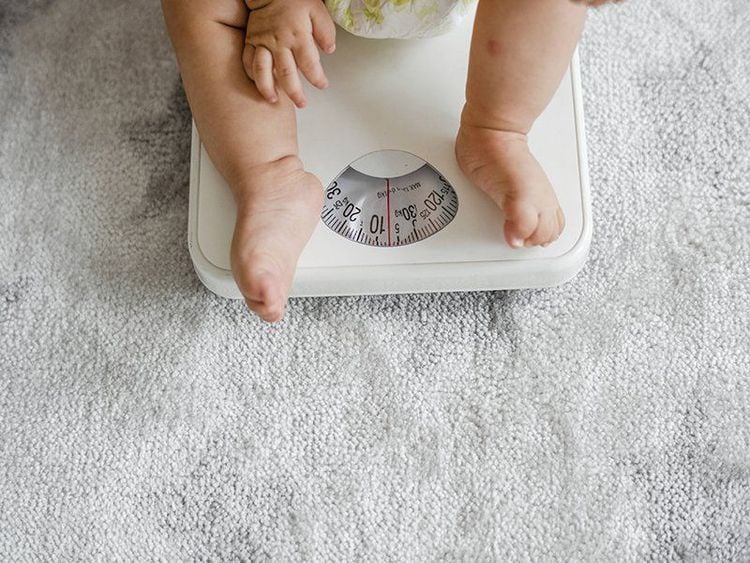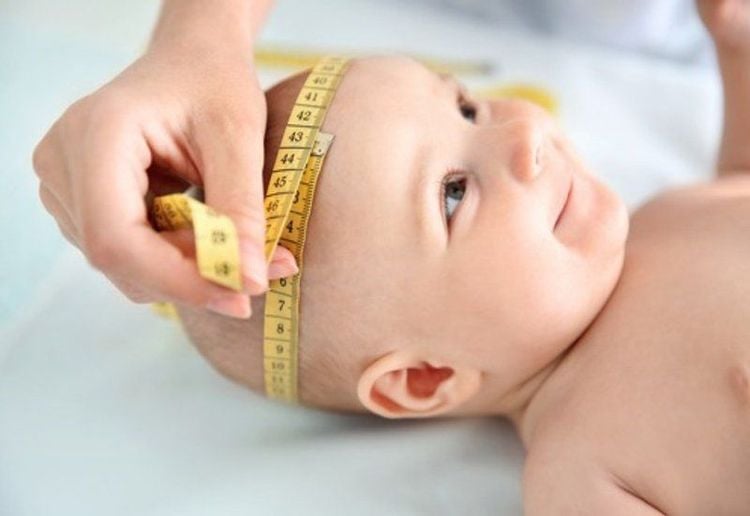This is an automatically translated article.
Children come in all shapes and sizes, and all babies develop at their own pace. At your pediatric visits, the health care provider will plot your child's growth on top of the child's growth chart to make sure your child is on the right track. The chart may look daunting, but your doctor can help you understand this helpful tool and what the results mean for your child.
1. Why is it important to monitor children's growth and development?
Growth monitoring is important as it begins from the moment a child is born and parents and carers should be encouraged to do the following:
Attend regular growth monitoring and promotion sessions (GMP) to make sure your baby is growing well. Take your baby for monitoring and growth spurts every month for the first year. Healthy, well-developed children should gain weight regularly every month. If your child is not gaining weight or losing weight, there is a problem. The child should be taken to the nearest medical facility for immediate treatment. Attending growth monitoring and promotion sessions can help identify nutritional problems your child may have, such as severe emaciation or swelling. Nutritional problems may require urgent treatment. During monitoring and growth sessions, parents and caregivers can ask questions about their child's growth, health, and nutrition.
2. Benefits of monitoring children's growth and development
Weight gain is the most important sign that a child is healthy, growing and developing well. A physical exam can also detect whether a child is gaining weight too quickly for his or her age. This requires checking the child's weight for his or her height, which can then determine if the child is overweight.

Cân nặng là một trong những chỉ số theo dõi sự tăng trưởng và phát triển của trẻ
If a child is underweight or overweight, it is important to check the child's diet and give parents or other caregivers advice about good nutrition. Every child should have a growth chart to track his or her development. It shows whether the child is developing in accordance with his age or not. At each weighing, the child's weight must be marked with a dot on the growth chart and the dots must be connected. A child who is not gaining enough weight in a month or two may need larger portions, more nutritious foods, or more frequent meals. The child may be sick or may need more attention and care or assistance with feeding. Parents and trained medical personnel need to act quickly to uncover the cause of the problem and take steps to correct it.
3. What is a growth chart?
Growth chart consisting of a series of percentage curves illustrating the distribution of selected body measurements in children. Childhood growth charts have been used by pediatricians, nurses, and parents to track the growth of infants, children, and adolescents in the United States since 1977.
CDC recommendations to health care providers:
Use WHO growth standards to monitor the growth of infants and children 0 to 2 years of age Use CDC growth charts for children children 2 years of age and older The growth chart is a tool that contributes to the overall clinical impression of the child being measured. Child growth charts are an important height and weight tracking tool that health care providers use to check your child's overall health. The chart is used to gauge how your child is growing compared to other children of the same age and sex and to see how your child is developing over time. Growth standards are used for babies to check for the following:
Head circumference (the distance around the largest part of the head, as this shows how the baby's brain is developing) Weight according to length Weight for age Length for age.

Biểu đồ tăng trưởng của trẻ em là công cụ quan trọng theo dõi chiều cao cân nặng của trẻ
Different charts are used for boys and girls, and different charts are also used for babies under 24 months and for those 2 years and older.
It is helpful to know that these charts provide information that your doctor can assess in the context of other developmental milestones, the size of your family members, and other factors. You can find and download the charts below.
Another growth pattern may not indicate a problem. For example, your child may simply be going through a growth spurt. Sometimes, however, a change in growth patterns can signal a problem and your child's healthcare provider will investigate further. For example, if your child has always been 40% heavier or longer than other children of the same age and sex, but is now 80% heavier and/or longer than other children, your pediatrician you can look at what caused this increase. evolution. Another change that could signal a problem is if your baby isn't growing and getting heavier at a steady rate. A healthy, well-nourished baby usually develops at a predictable rate. Any change from this ratio can help your baby's doctor detect and address any feeding, developmental or medical problems.
In addition, children need to be supplemented with zinc daily depending on their age to eat well, reach the correct height and weight and exceed the standard. Zinc plays a role in affecting most biological processes taking place in the body, especially the breakdown of nucleic acids, proteins... Organs in the body when zinc deficiency can lead to a There are a number of diseases such as neurological disorders, irritability, etc. Therefore, parents need to learn about the role of zinc and guide them to appropriate zinc supplements for their children.
In addition to zinc, parents also need to supplement their children with other important vitamins and minerals such as lysine, chromium, B vitamins,... errands.
Please regularly visit Vinmec.com website and update useful information to take care of your baby and family.













